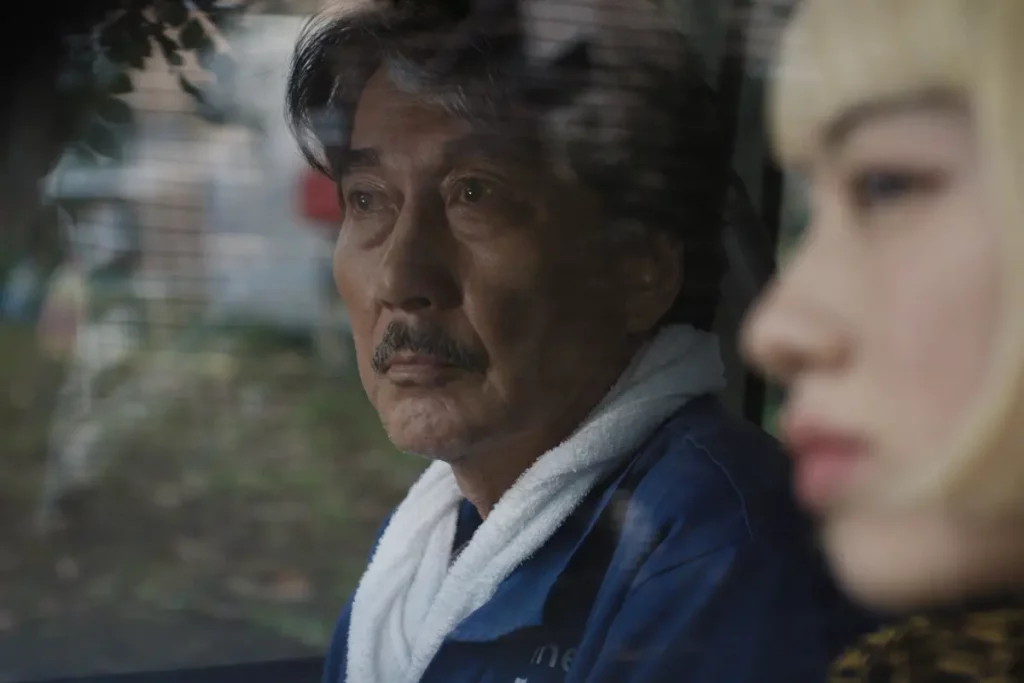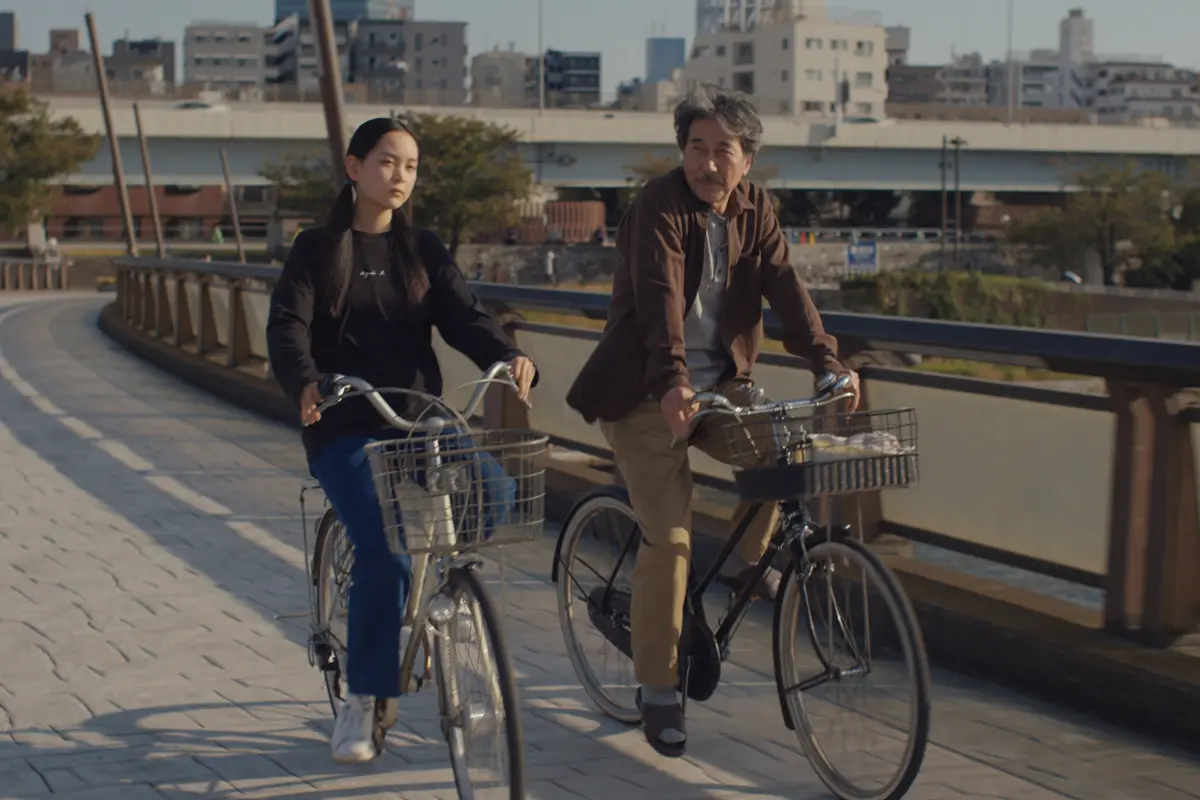Wabi sabi, Ikigai method and tea ceremony, Japanese philosophy for a fulfilling and happy existence: from Wenders’ Perfect Day to books by Héctor García and Francesc Miralles and Noriko Morishita
Wim Wenders’ Perfect Days is an ode to the Zen philosophy
Hirayama, a 60-year-old from Tokyo, leads a monotonous existence built around small daily rituals. He lives in a one-room, one-bathroom apartment. His job is to clean the city’s public toilets, a task he performs with extreme dedication and meticulousness. Although Wenders’ protagonist’s life may seem bare, boring, it conveys fullness and serenity. Hirayama is happy, kind and receives kindness. In the film we sense a different past that will never be discovered. This is because the narrative is focused on the here and now, in the fullness of the moment.
Like a hidden eye, the camera follows the man’s quiet life. Hirayama does not have much of a social life; he takes joy in observing the light filtering through the trees, in analog photography, in watering the maple seedlings he grows in the window, in lying on the tatami on Saturday mornings indulging in silence. The rituals of the 60-year-old’s life are framed in careful personal cleaning first, then of others’ bathrooms, a sandwich in the park at lunchtime, listening to music while driving the van. Hirayama listens to Lou Reed, the Velvet Underground and Patti Smith, The Animals and Van Morrison, Otis Redding and Nina Simone. When at home he reads William Shakespeare, Patricia Highsmith and Aya Koda.
Hirayama’s human fragility: Wim Wenders from Covid to Zen philosophy
Zen philosophy is embodied by Wim Wenders’ protagonist. Human fragility is overcome by drawing happiness from small things, being content with little. The film idea stems from Covid and the hope for change that has not been realized. Wenders realized how relentless Western culture is about constantly seeking things and experiences, always pursuing a career, always succeeding. While we hardly tolerate silence, or emptiness, we no longer know what boredom is. Western viewers are most impressed by the film, which shows a life possibility unknown to them. The film was awarded at the Cannes Film Festival and received 1 Critics Choice Award nomination.
What is wabi sabi, the Japanese concept that inspired Wim Wenders’ Perfect Days
«Less is more» is the concept director Wim Wenders was inspired by for Perfect Days. In Zen Buddhist culture there is a concept ‘wabi sabi’ which can be translated as «the limit of the essential», the Zen concept of living in an essential way. The terms wabi and sabi were originally two separate concepts. Wabi referred to solitude and simplicity, while sabi denoted age beauty. This concept can be applied to various forms of art, design, architecture, and even life. ‘Wabi-sabi’ embraces imperfect, transient and modest beauty.
Key elements of wabi-sabi include simplicity that can be reflected in the choice of raw materials, natural colors, and minimalist design; imperfections are seen as an integral part of beauty, such as cracks in ceramics, wrinkles in wood, or other features that show aging and wear. Wabi-sabi encourages modesty and restraint, avoiding excess and ostentation. In wabi-sabi there is a connection with nature, natural elements, such as stones, wood, and leaves, which help to reflect on life’s cyclical nature. Above all, wabi-sabi emphasizes appreciating the present moment and accepting time’s natural flow.

How to discover one’s Ikigai or purpose in life – Human Fragility
The Japanese term Ikigai combines the words iki (meaning life) and gai (meaning value or merit). The concept of Ikigai is often described as the reason you wake up in the morning, the reason you face each day. It has become popular as an approach to discovering and pursuing one’s life purpose. Our purpose is interpreted as the right balance between what we love to do, what we are proficient at, what the world needs, and what we are willing to be paid for. Finding what lies at the intersection of these questions leads to a meaningful and fulfilling life.
Ikigai is represented as a diagram of four overlapping circles representing the following four dimensions: What you love (passion), What you are talented at (skills), What the world needs (mission), What you are willing to be paid for (vocation). The intersection of the four circles is one’s ikigai, the point where all these elements come together. Finding one’s ikigai can help people identify a sense of purpose and direction in life, promoting well-being and personal fulfillment.
The Ikigai Method. The secrets of Japanese philosophy for a long and happy life by Héctor García and Francesc Miralles
Okinawa Prefecture, a small archipelago to the south of Japan, is part of the planet’s Blue Zones where the population manifests above-average longevity (the Blue Zones include Sardinia). The eating and living habits of the inhabitants of these areas have been studied in depth by various bio-medicines. Writers Héctor García and Francesc Miralles, scholars and enthusiasts of Japanese culture, have conducted years of on-site studies to understand why these people have longevity. On the Japanese island of Okinawa, there are more than twenty-four centenarians for every one hundred thousand inhabitants, which is significantly higher than the world average. García and Miralles traveled to Ogimi, the ‘village of centenarians’ to identify the reasons for this longevity. They did this by contacting local elders and studying their habits. Their studies resulted in the best-selling book translated into more than thirty languages on living a long and happy life.
What makes Okinawans among the longest-living people in the world: the Ikigai according to Héctor García and Francesc Miralles
In 2021, the average life expectancy in Ogimi was eight-five years, about thirteen years higher than the world average of seventy-two years. By being in contact with the inhabitants of Ogimi, García and Miralles found that in addition to living very long, the inhabitants of these islands have strong points in their existence. By interviewing and observing the inhabitants, the authors discovered a common pattern among those living in Ogimi. They all have one or more ikigai. Ogimi residents eat mostly plant-based foods and fill their stomachs only up to 80 percent so they are not weighed down.
They have community ties; for some, serving others and being in community is their own ikigai. They keep themselves physically active mainly through light exercises such as walking. They cultivate hobbies they are passionate about, many of them gardening, which allows them to spend time outdoors, eat healthy foods and reconnect with nature. They do not believe in retirement. For Ogimi residents there is no time to retire because they never stop being active, pushing old age away. What allows these people to stay active longer is Ikigai. This is what motivates them to get out of bed every morning combined with the happiness of devoting themselves daily to what they love.
A life of happiness according to Ogimians: here and now
There is no happy and long life without difficulties or problems, not even for Ogimi’s long-lived inhabitants. What characterizes their attitude to life, however, is precisely how they deal with problems: «Everything can be taken away from a man except one thing, the last of human freedoms: to choose one’s attitude under any circumstances, to choose one’s own way». According to the island philosophy of the Okinawa archipelago, «He who has a reason to strive for (ikigai) can endure almost any how». One of the secrets to dealing with life’s problems and challenges is to live in the Here and Now, focus on the moment, live in the moment and stay in the flow of one’s ikigai.
Every Day is a Good Day by Noriko Morishita – Human Fragility
Noriko Morishita was born in Yokohama, Kanagawa Prefecture, in 1956. At the age of 20, Noriko, convinced by her mother, began attending Mrs. Takeda’s tea ceremony classes. Every Day is a Good Day is an autobiographical account of Noriko’s classes and of an ancient tradition, its rituals, and its deepest philosophy. Sixteenth-century Buddhist monks codified every step of this ritual, which, through the simplest gestures, calls participants to focus on the profound search for self.
The first part of Noriko Morishita’s book recounts the ritual and the lessons it follows in a slavish manner. It explains every slight movement of the hands and every instrument that must be memorized in detail, without explaining its origins or reasons. The ritual unchanged through the centuries makes tea ceremony seem distant from everyday life. It seemed so even to Morishita Noriko, who did not know that those first lessons would only be the beginning of a lifelong journey. Tea ceremonies require difficult steps to accomplish, and even skilled people take years to complete a ritual properly. Noriko Morishita has low self-esteem, which slows her learning, but perseverance will lead her to achievement.
About Human Fragility – Never stop learning: the Japanese tea ceremony
Tea ceremony is not only a code of behavior. Through the ritual, elements that are not immediately visible are harmonized: the state of mind, the relationship with others, the perception of time passing, the feelings brought by the seasons with their alternation and by the light, heat, wind, and rain of the day. Many ritual instruments change according to the season and some even according to the Chinese horoscope cycle. They return to use no more than five or six times in the master’s lifetime.
So that the monster is a pupil. Although the basis of the ceremony remains the tasting of matcha tea, it changes every day as the liturgical gestures of the master and pupils harmonize with the flowers, the ornamental verse decorating the room, the decorations of the pots, the officiant’s kimono, the light coming in from outside, the shadows, and the sounds of the garden. The tea ceremony can be seen as a metaphor: ritual becomes life, and life is a ritual to look at the world each day as if for the first time, listening to nature and indulging in the seasons.
Living here and now, the Japanese tea ceremony and Zen life
The moments devoted to the tea ceremony and the meditation it imposes become moments to find meaning in the trials life puts before Noriko: a marriage annulled just weeks before the ceremony, an attempt to reconcile work and private life, a move overseas. Every day at the tea ceremony class there is a different maxim hanging on the wall on a scroll handwritten in ancient characters. The flowers in the vase change according to the season, as do the sweets served with tea. It is one of these ‘every day is a good day’ maxims that brought Morishita Noriko to realization. «The rain fell incessantly. I sat where I was, almost breathless with excitement. When it rains, listen to the rain. When it snows, watch the snow. Enjoy summer warmth and winter cold. Enjoy each day, whatever it is. This way of living is what tea contains».
The Ikigai is hidden in each of us
Finding one’s ikigai, one’s ‘raison d’être,’ enables us to lead a full, satisfying and worthwhile existence. Each of us possesses our own, although not all of us know it. Ikigai can be whatever makes us happy, whether it is writing or cleaning toilets in Tokyo like Hirayama.
Ikigai has been portrayed as a kind of flow, an immersive experience that we have whenever we do something that we are truly passionate about and are not aware of the time passing: such as gardening, dancing, cooking, theater, learning something new, these are rewarding moments in which the mind is not distracted and an almost meditative state of intense fulfillment can be achieved.
The secret of Okinawa, where there are more than 24 centenarians for every 1,000 inhabitants, and Hirayama is awareness of personal inclinations. This awareness leads to the identification of one’s role in society through which one can feel useful and committed to the last.
Domiziana Montello



















